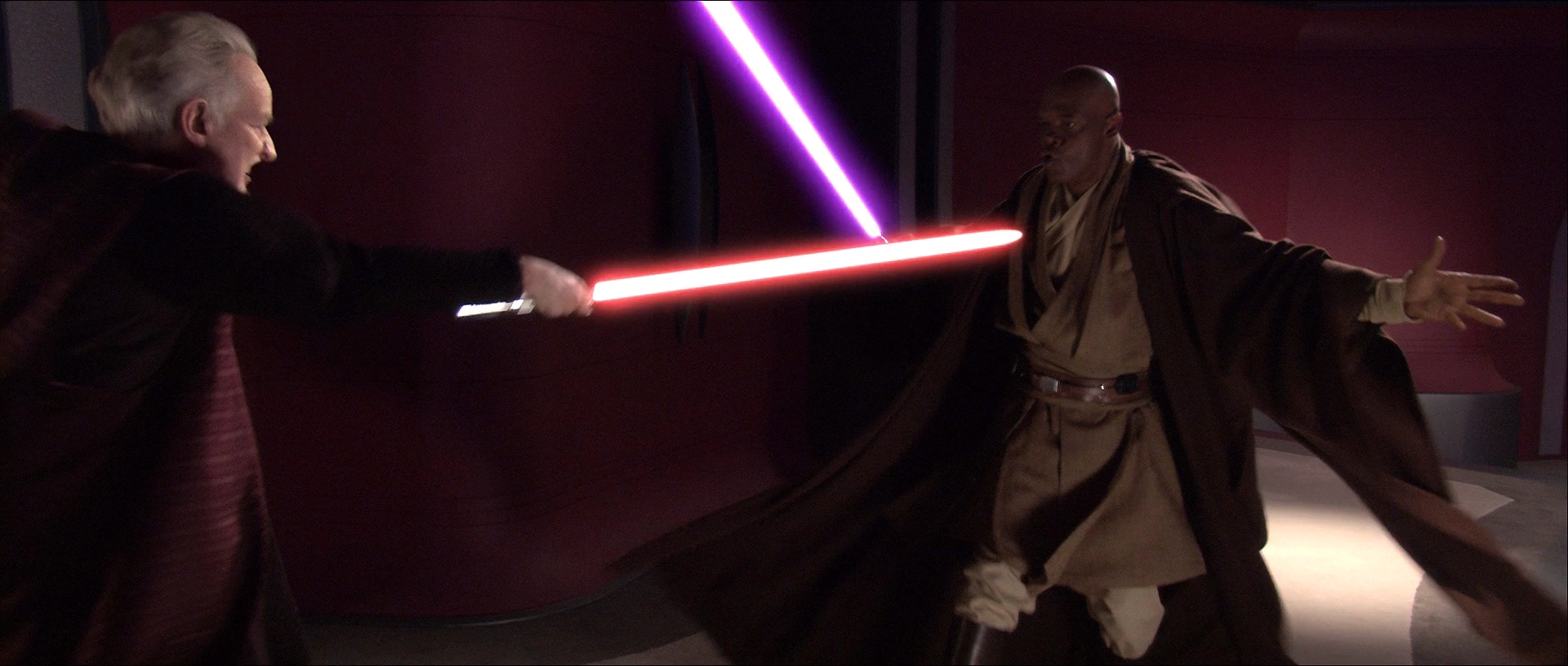 |
| Oh god, what am I doing? I got to get out of this flame war before it begins! |
Anyway, like I had been doing before with the Fallout AH Scenarios, maybe I will do a few Star Wars ones. And for the first one, let's go to the Prequels, specifically Episode Three, and do a little thought experiment of what happens if... Uh, wait.... SPOILERS FOR STAR WARS: EPISODE THREE REVENGE OF THE SITH!!!!!!
Also, not going to go into the Expanded Universe stuff, mostly because I don't know if very well, and I will spend forever researching it other wise.
Point of Divergence
Anakin Skywalker decided to stay at the Jedi Temple, or wasn't able to arrive soon enough, to intervene in the climatic battle between Mace Windu and Chancellor Palpatine, aka Darth Sidious, aka the future Emperor. Windu kills Palpatine, the last Sith leader in the galaxy, and the mastermind behind the Civil War between the Separatists and the Galactic Republic.
 |
| [Insert epic John Williams score here] |
However, this was not the clean sweep that the Jedi Council hoped for, and even though the Civil War is nearly over, politics in the Senate begins to rear it's ugly head once again. Many of the Senators were influenced by the now deceased Palpatine, and while some, such as Bail Organa from Alderaan and Padme Amidala of Naboo, saw his death as a chance to restore democracy. But soon the Senate is divided, with many calling for the end of the Jedi Council as a separate organization, especially if they tried to police the government without the approval of the Senate.
The Jedi Order, though pleased to have removed the last Sith Lord, is now trust into a huge political storm. Mace Windu is tried by the Senate for his illegal murder of Palpatine, and is forced out of the Jedi Order and sent into exile, as a scapegoat. But it wasn't enough, and soon laws are passed to make the Jedi Order officially subservient to the Senate, with Senators appointed to oversee all the operations of the Jedi. Some, like Master Yoda, reluctantly allow it, while Obi-Wan Kenobi begins to resent the interference, especially when he relays the information he learned of the last Separatist leaders being on Mustafar, but due to the delays in getting approval from the Senate, they escape, and the Civil War drags on longer and longer as the last leaders are able to slowly rebuild, and the fighting continues for years.
Anakin Skywalker is finally made a Master of the Jedi Order for telling the Jedi of Palpatine's plot, but he quickly adapts to the the new situation, and is named the first Senator to represent the Jedi Order, a bone thrown to the Jedi in return for all their privileges that were removed. But the morale of the Jedi is low, and it takes years to improve it.
 |
| I dunno, I just wanted a picture with more Jedi's and Lightsabers. |
The next major crisis to rock the Jedi Order is the eventual discovery of Anakin Skywalker and Padme Amidala's marriage and her twins, which while kept secret for a year, eventually is leaked to the Galactic Senate and Jedi Council. The Conservatives in the Council sought to kick out Anikin, both for breaking the non-marriage code of the Jedi and for his closeness with the Senate and government, but Anakin, with his ties to the Senate, eventually gets approval for his actions, and the Senate orders to the Jedi Council to remove the celibacy requirement of the order. Many of those that secretly wished for this for decades are now given the chance to come out and marry, and many of their children are also Force sensitive, which in the long run helped the Jedi Order rebuild it's ranks after the long and brutal Civil War, which was still raging in certain areas.
Of course, eventually the Dark Side of the Force will rear it's head again, most likely once the Civil War is nearly over, leading into more intergalactic space battles and fights between Jedi and etc. etc... but I really don't know enough about Star Wars to even begin to guess what to say about it. For all I know, Anakin will still turn to the Dark Side, become Darth Vader, and lead to opposition. Or maybe a bitter Mace Windu. Or an angry Obi-Wan Kenobi. I don't know. Either way, if someone with more knowledge of the Expanded Universe (or, I guess it's called Legends now, okay) could make a plausible scenario.
Hope all my readers had a Merry Christmas and a Happy Holiday, and hopefully I can get into a better routine in the new year, most likely with some other Alternate Histories based on movies, TV shows, video games and books!
 |
| Wait, wait... no no no no! No Doctor Who Alternate histories yet! GET BACK DALEKS, NOOOOOO!!!! |

